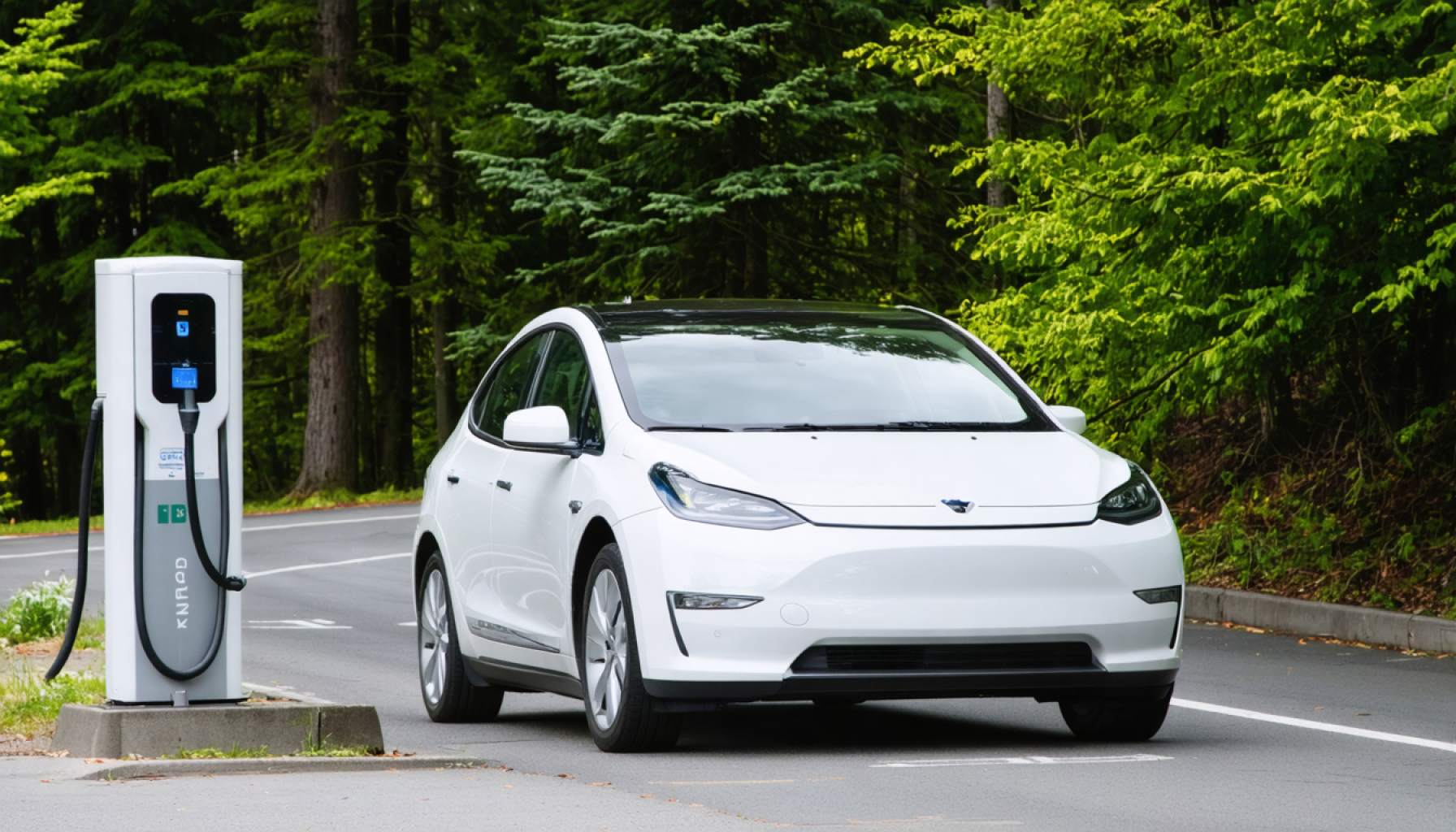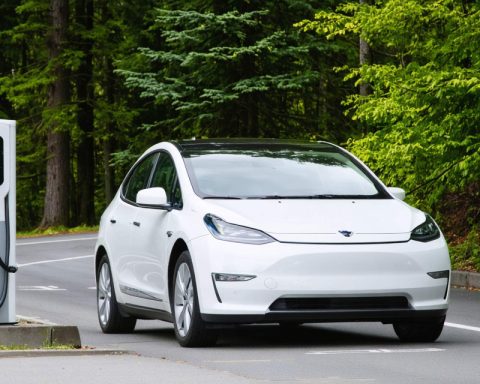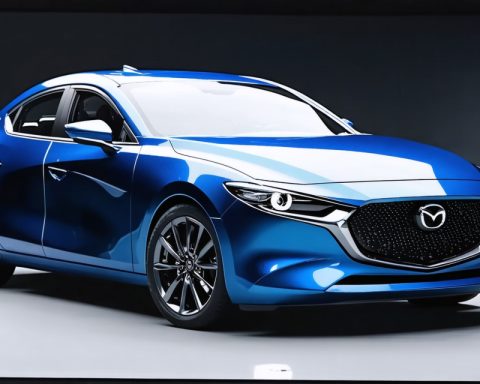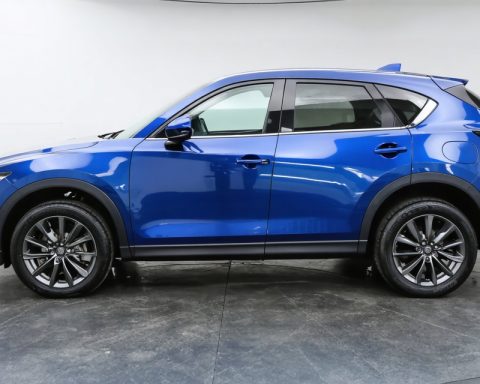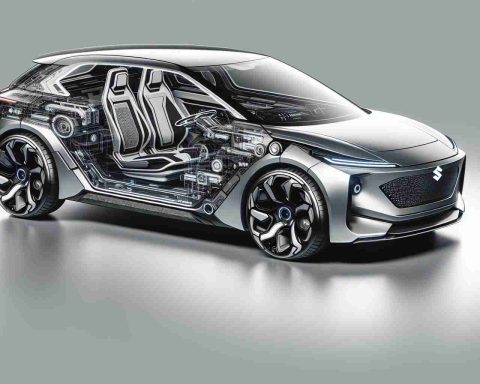- Oregon faces a funding crisis for its transportation infrastructure due to declining gas tax revenue from increasing electric vehicle (EV) adoption.
- The state hit over 100,000 registered EVs, highlighting the urgency to find sustainable funding alternatives as traditional revenue streams dry up.
- Oregon’s road usage charge program, OReGO, aims to replace traditional gas tax revenues with a per-mile charge but currently has limited participation.
- OReGO offers a modern solution by charging drivers based on actual road usage, supported by GPS and other tracking methods, potentially balancing equity and efficiency.
- There is potential for OReGO to become a national model if successfully scaled, addressing similar challenges faced by other states.
- The program represents a collaboration between public agencies and private companies, ensuring innovative revenue solutions for infrastructure funding.
Oregon’s roads, once fueled by the predictability of gas tax revenues, now find themselves at a crossroads. The state recently marked a major achievement—registering over 100,000 electric vehicles. While this milestone aligns perfectly with Oregon’s ambitious climate goals, it also exposes an urgent conundrum: how to fund a transportation network increasingly driven by green energy but starved of traditional gas tax dollars.
As electric vehicles (EVs) captivate more drivers, fuel-efficient travel comes at a steep price to the state’s coffers. Lawmakers face the challenge of bridging a staggering $1.8 billion per year gap for maintaining and expanding the state’s transportation infrastructure. The irony? The greener the fleet, the emptier the funding tank. With fewer drivers paying the 40-cents-per-gallon gas tax, a reliable revenue stream is drying up even as road construction costs soar due to inflation.
What’s the solution? Perhaps it lies in OReGO—Oregon’s first-in-the-nation road usage charge program. Launched in 2015, this voluntary initiative offers drivers a chance to swap traditional DMV fees for a per-mile charge. Yet, with just under 1,000 participants, OReGO remains underutilized. Lawmakers, along with transportation experts, are now eyeing it as a scalable solution to the funding conundrum.
The concept is simple, yet revolutionary: Charge drivers for the roads they use. Jim Whitty, a pioneer of the program, envisions a system that mimics the everyday fairness of paying for what we consume. Historically, the gas tax served this purpose, tethering usage directly to revenue. But in a landscape dominated by EVs and high-mileage vehicles, OReGO could be the modern answer.
Originally foreseen in the early 2000s by Sen. Bruce Starr, the shift to non-gasoline vehicles sparked the creation of a task force that sowed the seeds for today’s program. Fast forward to now, and EV owners pay higher upfront fees—$192 to title and $316 for a two-year registration. By contrast, opting into OReGO cuts these costs, allowing electric drivers to benefit from per-mile fees rather than a flat registration. Using GPS, odometer readings, or in-car computers, the program keeps a meticulous record of in-state travel, ensuring equity and accuracy.
If Oregon, with its eclectic mix of urban progressives and rugged individualists, can scale OReGO, it sets a precedent for states across the nation grappling with the same fiscal pressures. The program represents a harmonious blend of public agency oversight and private sector innovation. Tim Martinez, representing GeoToll—one of the participating companies—applauds the seamless system, likening it to a blueprint for equitable revenue generation.
As Oregon charts unknown territory, it heralds a broader question for policymakers and citizens alike: Can this initiative, born of necessity and nurtured by innovation, hold together the state’s infrastructure without sacrificing the environmental advances of its electric revolution? The coming months and years will tell if OReGO becomes the template for a nation on the brink of a similar transformation. The road ahead is uncertain, but with the right mix of policy and participation, Oregon might just pave the way for us all.
How Oregon’s Road Usage Charge Could Change the Landscape of Infrastructure Funding
Oregon’s transportation funding crisis has been propelled into the spotlight due to a significant increase in electric vehicle (EV) registrations. As the state strives to meet ambitious climate goals with greener travel options, the dwindling revenue from traditional gas taxes has emerged as a pressing issue. Here, we delve into the complexities surrounding this transition and explore potential solutions, emerging trends, and what the future may hold for road funding in Oregon and beyond.
Understanding the Crux of the Funding Issue
While the increase in EV ownership—over 100,000 registered in Oregon—represents a milestone for climate goals, it simultaneously exacerbates financial issues. The traditional gas tax, once a robust source of income, is quickly becoming obsolete, leaving a significant funding gap of $1.8 billion annually. Inflation further compounds this issue by driving up construction and maintenance costs.
Exploring the OReGO Road Usage Charge Program
The OReGO initiative, launched in 2015, provides a compelling alternative to the gas tax. By introducing a per-mile fee, it directly ties usage to payment, ensuring that only those who utilize the roads contribute to their upkeep. Despite its innovative approach, participation remains low, under 1,000 drivers, indicating a potential need for increased awareness and adaptation to enhance its utility.
How OReGO Works
1. Enrollment: Drivers can voluntarily join the OReGO program, replacing their standard DMV fees with a per-mile charge.
2. Tracking: Participants can choose between GPS technology, odometer readings, or in-vehicle systems to record mileage.
3. Cost Efficiency: For electric vehicle owners, this model reduces the registration burden and aligns maintenance fees closer to actual usage.
Real-World Use Cases and the Future of OReGO
Adopting the OReGO model on a larger scale could serve as a groundbreaking approach for other states. As funding dilemmas become more pronounced nationwide, several states may look to Oregon as a potential prototype for implementing similar systems.
Relevant Challenges and Limitations
1. Privacy Concerns: The use of GPS and other tracking technologies may raise privacy issues among potential participants.
2. Equity Issues: Ensuring that per-mile fees are structured fairly across different demographics and income levels remains crucial.
3. Scalability: Increasing participation will require strategic outreach and possibly adjustments to the fee structure to incentivize enrollment.
Industry Trends and Predictions
As the automotive industry continues steering towards electric vehicles, with significant investments in battery technology and infrastructure by companies like Tesla, GM, and Ford, traditional funding models will need substantial overhauls. OReGO’s model, with its fair usage-charge framework, could set a precedent for similar adaptations across the nation.
Pro Tips for Drivers
– Consider Enrollment: If you’re an EV owner, look into the OReGO program for potential savings on registration fees.
– Stay Informed: Watch for legislative updates that might affect transportation fees and incentives for EVs.
– Advocate and Participate: Get involved in local discussions about road funding to voice your support or concerns regarding usage-based models.
Conclusion and Actionable Steps
To harness the full potential of the OReGO system, increased public awareness and governmental buy-in are essential. Legislators might explore mandatory or incentivized participation as a fair mechanism for meeting infrastructure needs. As Oregon pioneers this path, the outcomes will be closely watched by states grappling with similar dilemmas. For more information, visit the Oregon state government website.
The road to an equitable, sustainable transportation finance system is fraught with challenges, but innovative solutions like OReGO may light the way forward.
